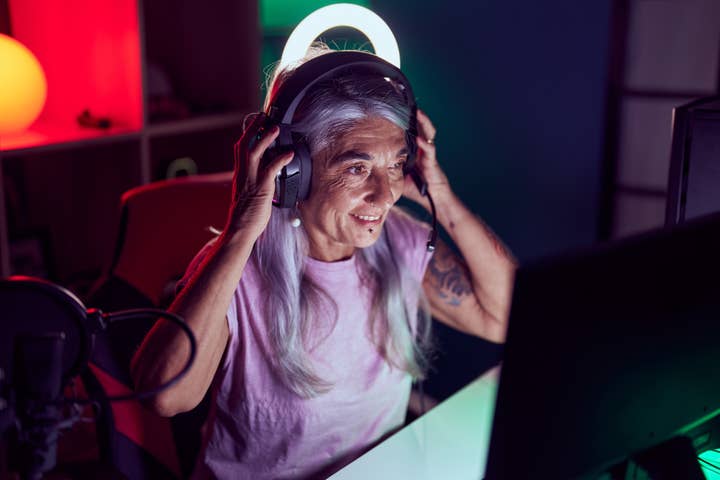The definitive primer for publishers and developers on striking deals with influencers
Gamesight's Emilee Helm shares five influencer marketing strategies, and how to identify good offers from bad ones
Navigating the world of influencer partnerships can be daunting for game publishers and developers, but a well-structured deal can create an invaluable, campaign-defining activation that makes the difference between a game arriving to modest fanfare or becoming an unignorable, widespread presence in gaming culture.
Strategic deployments with content creators simply hold too much potential to ignore when launching a game, particularly as budgets continue to tighten for the vast majority of teams through the foreseeable future.

While every campaign is unique, there are common concepts within these negotiations developers and publishers of all sizes should keep in mind as they consider activations in 2024 and beyond. Gamesight has had the privilege of collaborating with thousands of creators across top platforms, including TikTok, Twitch, and YouTube.
Here are five key strategies I've learned from over a decade working in influencer marketing and supporting some of the most successful, renowned games released in the industry's modern era.
1. Know when your game is ready
Qualifying your own game and knowing when it's ready for influencers to set you both up for success. Basic qualifiers are:
- Does your game have an upcoming beat, launch, DLC, and so on?
- How are you incentivizing paid, organic, or earned engagement?
- Can your budget hit your goals?
2. Setting budgets
Ask yourself which influencers can you afford, and what deliverables can you achieve with that budget?
Your influencer marketing budget should reflect your overall objectives, whether performance-driven (clicks and conversions) or awareness-focused (views and engagement). Common goals and KPIs can guide your budgeting decisions; determine whether you're prioritizing:
- Cost per view/cost per viewer hour
- Genre takeover (appearing higher in the Twitch directory)
- Earned engagement
- Website visits
- Pre-orders or purchases
There are many nuances to calculating this, but as a starting point you can multiply a streamer's average viewership by two – keep in mind, however, that streamers with larger followings will be in the five-figure range.
For Twitch streams, the industry standard to calculate payment is called "cost per viewer hour" or CPVH. This is when you pay for one viewer to watch a stream for one hour (extrapolated based on average viewership). For YouTube or short-form content (like TikTok), you will look at "cost per view" or CPV.
Creators are also more likely to participate with a campaign that makes it seem less like an ad and more like regular content
Here are some general measures:
- $1.50-3 CPVH on Twitch
- $0.05-0.15 CPV on YT/VODs
- $0.02-15 CPV on short form (TikTok, IG Reels, YT Shorts)
The number of deliverables you would like from an influencer should be part of the budget. Each deliverable you're asking for will incur its own cost. Deciding how many deliverables to include really depends on the game, the KPIs, the type of content available from the game, and the lead-time available to outreach creators for specific things.
If a company's goal is to get within the top five games on Twitch for example, having simple deliverables makes it easier to align more creators to go live at a given time.
Creators are also more likely to participate with a campaign that is straightforward, allows them creative freedom, and involves a process that makes it seem less like an ad and more like regular content.
3. There's always room to negotiate, but be realistic
As a brand, there are questions to ask yourself before reaching out to creators. You should set your KPIs and gather data on the creators you're considering working with. Consider:
- How much will you spend for x amount of views/clicks?
- Does this creator's content align with your brand?
- How well does this creator's sponsored content perform? Do you have backup creators in case this creator doesn't work out?
These initial steps are crucial in determining whether a rate is reasonable and preparing for negotiations. They also help educate creators and build better relationships. If both parties can't agree on a rate that meets the brand's KPI goals and provides a reasonable return on investment, it's okay to walk away. Most creators understand this is a business, and every brand has different objectives. Creators are usually open to negotiations, but sometimes, they can be firm on their rate or quote significantly higher than anticipated. This is a sign that it's time to look for another creator.
Creators and agencies understand that budget is finite, and sometimes, you need to work with what you have. You can always position yourself for success by:
1) Giving your best offer
2) Understanding what informs a "premium" rate:
- Platform restrictions (mobile, PS5 only, etc.)
- Any level of "risk" to a creator's brand or reputation
- New vs established IP
- Rigidity of requirements (for instance limiting creative freedom)
- Tight timelines
- Asking for usage rights
3) Knowing when to move on

4. Contracting pitfalls
When sponsoring content creators to advertise your game, it is essential to understand what works and what doesn't. If audiences realize that a segment, stream, or video is sponsored, they are less likely to engage with it positively.
To avoid being perceived as a sellout, it is essential to allow creators to create content that aligns with their style and meets their audience's expectations.
Beforehand, research potential talent and understand what to expect from them during the sponsored segment. Don't be surprised if a creator known for being objective points out any pitfalls your game might have.
The best sponsored content aligns with a creator's regular style, and it's essential to show the audience that your game is fun instead of merely telling them
The best sponsored content aligns with a creator's regular style, and it's essential to show the audience that your game is fun instead of merely telling them. Therefore, it's crucial to contract creators and outline your goals in a brief beforehand so that everyone is on the same page.
Empower creators with creative freedom and set them up for success while ensuring they hit your major talking points. To meet your KPIs, make specific requests such as:
- Requiring a panel image in the stream description with a tracking link to the game page hyperlinked
- Having each creator use the same hashtags throughout their social posts to help drive awareness
- Giving creators simple yet tactical calls to action (CTAs) that drive home what you want audiences to take away from the content
- If maximizing views is a priority, allow creators to go live during their peak viewership times to maximize reach. Or if reaching the top five on Twitch is the priority, contract all creators to go live within a specific time range to boost your game up the charts.
5. Be a good partner
Transparency and flexibility go a long way; leaving your creators with a positive experience will make an impact. Through all stages of engaging with influencers and their management, it pays off in the long run to:
- Be realistic and generous with your time: for well-produced and creative content pieces, lead time and preparation is everything.
- Be adaptable: technology issues, server issues, game delays. Expect the unexpected.
- Follow through: invest in your community, your top performers, and lay the foundation for long-term partnerships.
Effective influencer partnerships are about more than just transactions; they are about forging authentic, mutually beneficial relationships. By being strategic, adaptable, and respectful, you can leverage these collaborations to amplify your game's reach and brand sentiment within the gaming community.
Collaborating with agencies can be an advantageous option if bringing someone onto your team to manage influencer relations isn't currently viable, but however you approach working with influencers for future activations, keeping these best practices in mind is key to designing an effective promotional campaign primed to deliver results while also developing long-lasting business relationships you can return to for future titles.
Sign up for the GI Daily here to get the biggest news straight to your inbox








